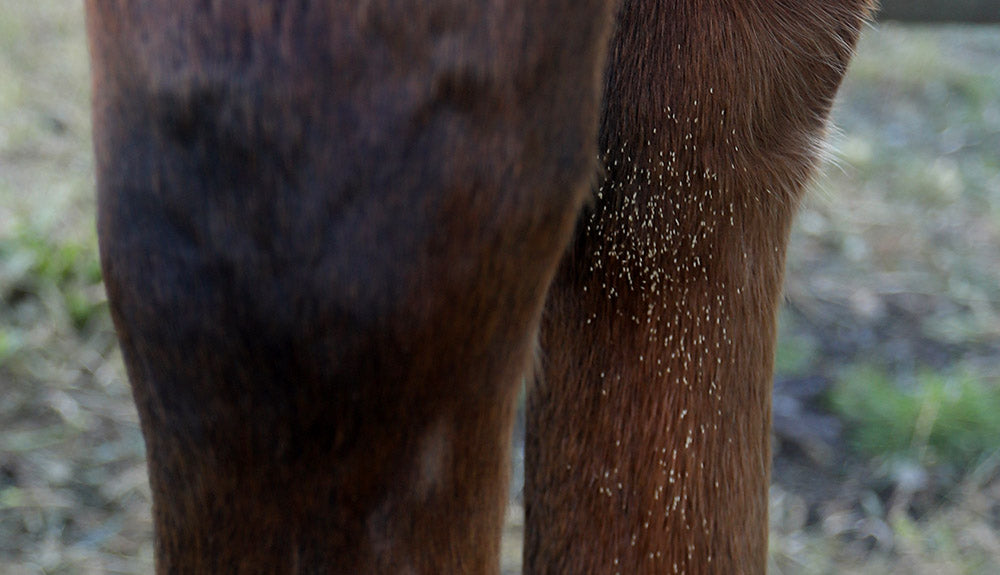Tips for tackling bot flies on your horse
Share
Autumn has arrived in Australia! Whilst this means most of us have seen a break in the dry weather and are starting to see green grass popping up in our horse paddocks, it also unfortunately means we’re starting to see botfly eggs appearing on our horses.

So, what exactly are bot flies and why do they lay eggs on our horses?
Well, bot flies have a rather unusual life cycle and actually rely on horses to reproduce. Each female adult bot fly will lay between 150 to 1000 eggs on a horse, predominantly on the hair of their legs, shoulders, and flanks. The positioning of these eggs on your horse’s body means they’re within reach on your horse’s mouth if they rub at or bite the area with their mouth. After seven to ten days, the eggs will hatch, and the fly larvae will emerge.
This is where it all becomes a little gruesome! Once the bot fly larvae have found their way in or near your horse’s mouth, they crawl their way in and bury themselves into your horse’s tongue, gums, or cheeks. They’ll remain there for around a month, before moving into your horse’s stomach, where they continue to grow for the next 9-12 months by hooking themselves into the lining of your horse’s stomach, before eventually detaching and passing out in manure and emerging as adult flies. This whole process not only sounds awful for your horse, but can also lead to ulceration of the stomach, loss of appetite, or in extreme cases even colic.

If you’re looking for ways to help prevent a botfly infestation for your horse this autumn, here are the two most effective methods:
- Remove the eggs from your horse’s coat regularly – Regular removal of as many bot fly eggs as you can will help ensure they don’t have the chance to hatch and make their way to your horse’s mouth in the first place. Our best tip for removing bot fly eggs is to use one of our Equine Safety Razors. We all know bot fly eggs can be really tough to remove, so the combination of Swiss stainless-steel blades, with plastic safety teeth on our razors, helps to catch the eggs and remove them from the coat without the risk of accidentally nicking your horse’s skin.
- Use a wormer that is effective against botfly larvae in autumn – Since autumn is usually the season that botflies begin their cycle and try to work their way into the horse’s stomach, it’s the most important time of the year to worm your horse. The first frost in autumn will usually end the life cycle of the adult bot flies. So, a well-timed treatment after the first frost, with the correct parasiticide will kill larvae in your horse’s body and interrupt the life cycle of the fly and larvae.
